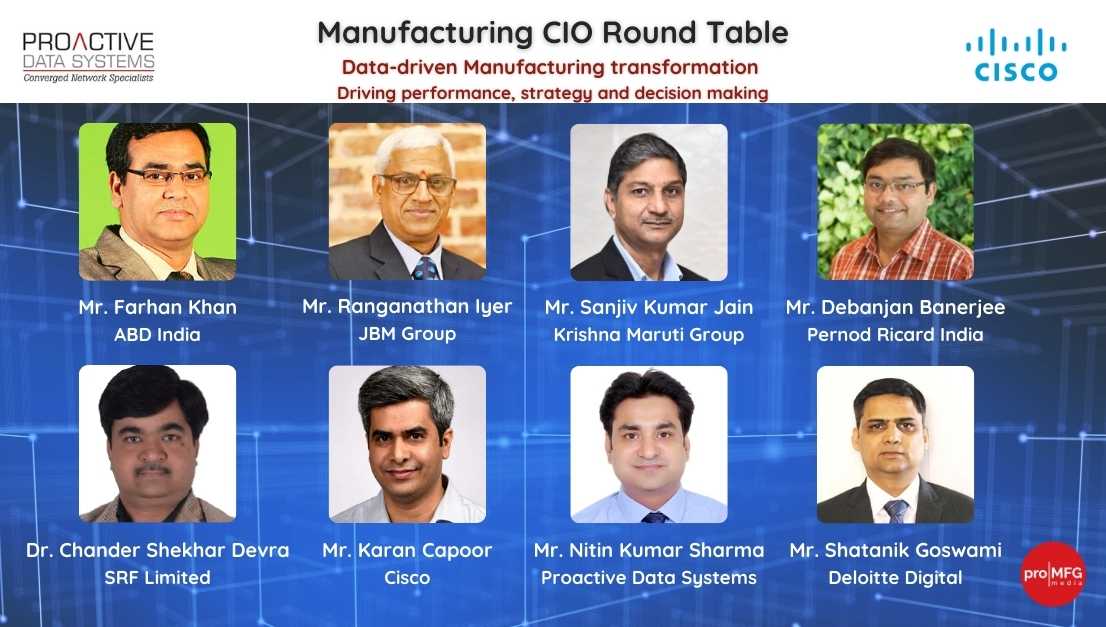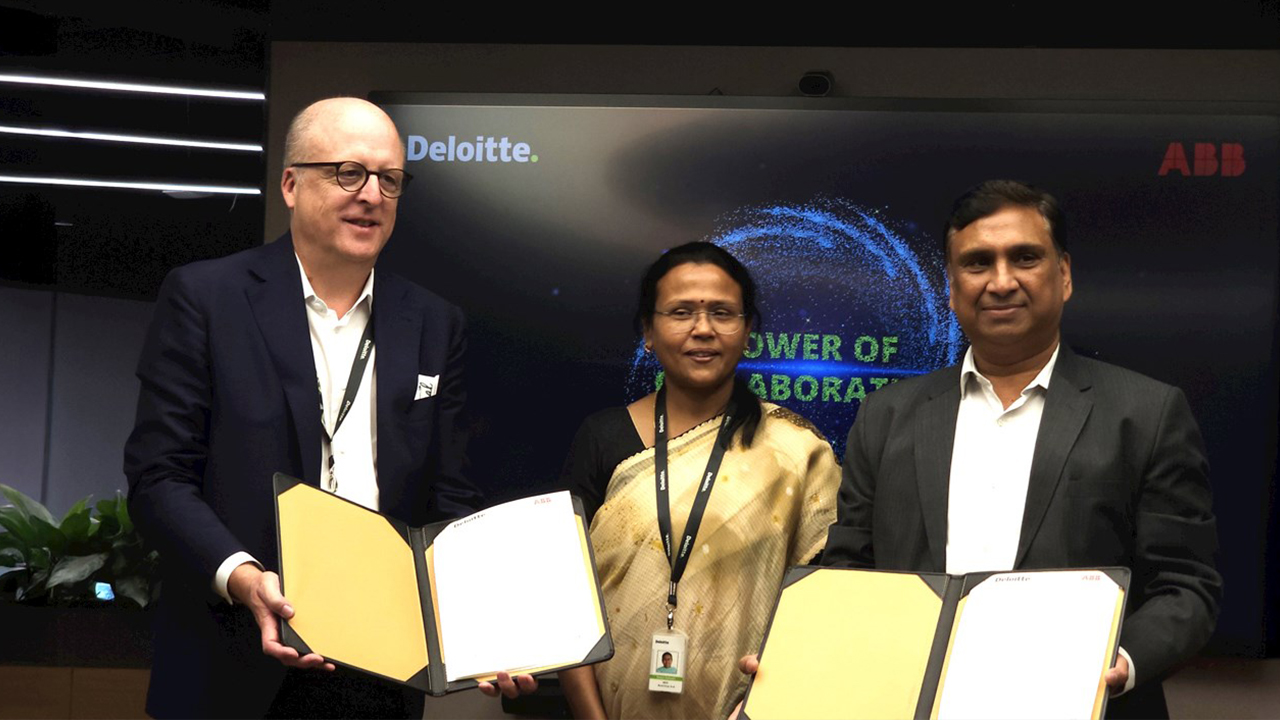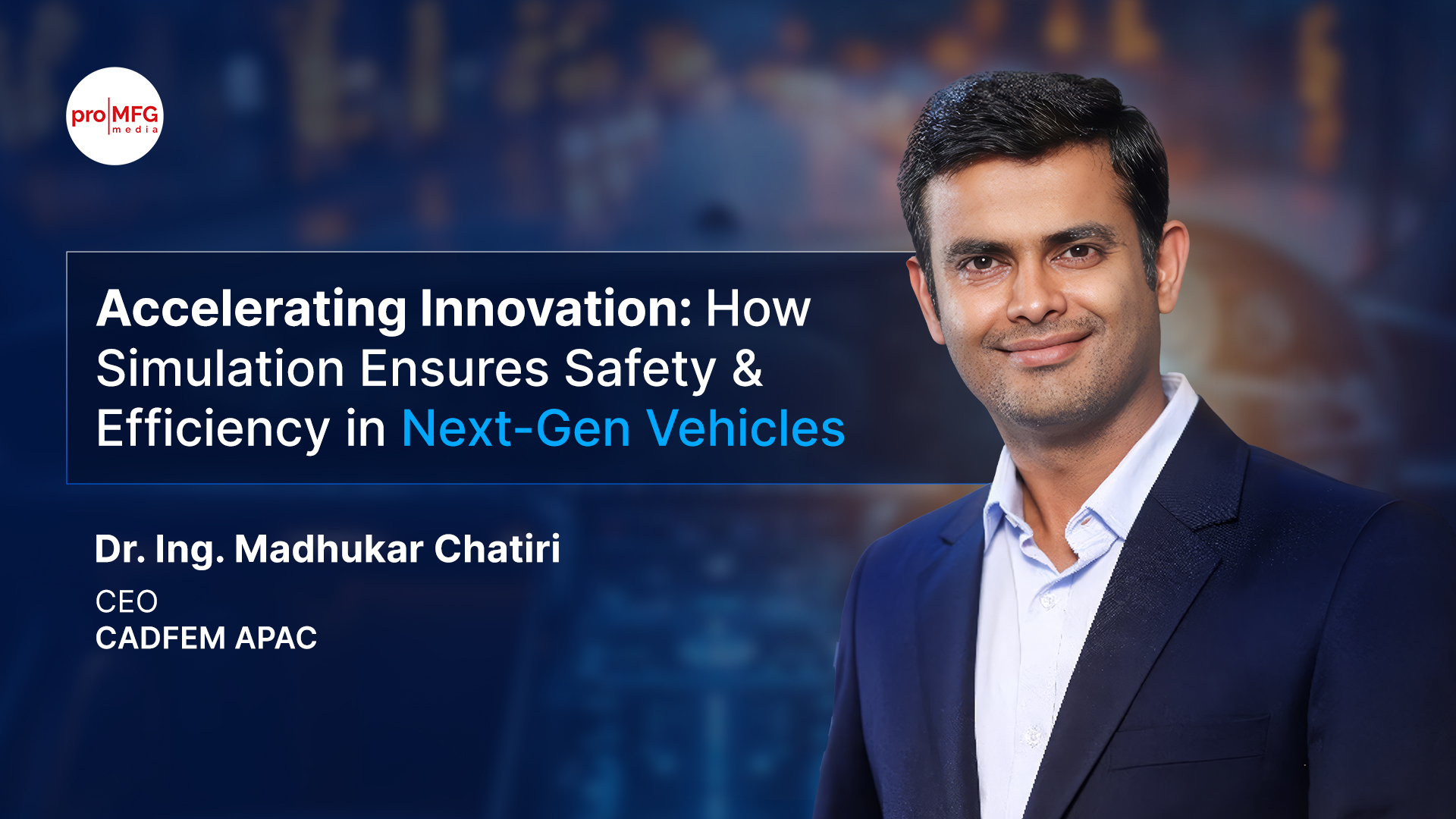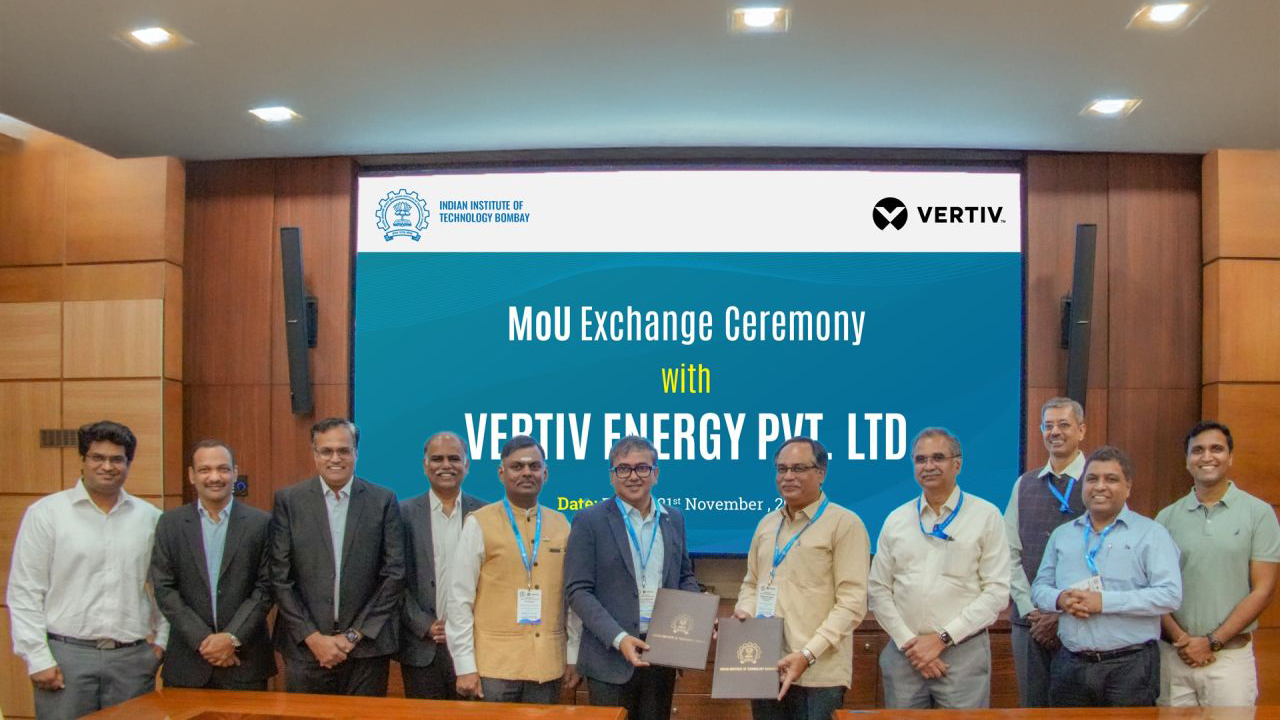Driving Excellence Through Data Driven Manufacturing Transformation
#ProactiveDataSystems #CISCO #Digital #transformationThe Manufacturing CIO Roundtable, co-presented by Proactive Data Systems and CISCO, focuses on data-driven manufacturing transformation towards enabling performance, strategy and decision-making.

Setting the stage for the roundtable, Mr. Shatanik Goswami, Director(Digital) at Deloitte, stated that what data driven manufacturing is enabling is essentially innovations around creation of products, smart products and services, new ways of connecting and integrating the customers, acceleration in managing design cycles and innovate around research. In fact, the one great transformation that data-driven manufacturing brings about is aiding users and employees with digital information, which is then captured and analyzed to generate insights, he added.
He further stated that the key challenges in this regard lie in making sense of this data, integrating the different data systems and aligning the various other priorities of the stakeholders with the execution of these transformations across organizations.
In fact, according to a 2019 survey of the manufacturing industry by Deloitte wherein the respondents were typically the C-suite executives, as much as 94 percent of the respondents had said that digital transformation was a top priority. However, only 68 percent of them said that these transformations are difficult to maintain in reality. Interestingly, only few of these respondents were actually able to draw up analysis and insights from the data. And this very gap in the competitive mindsets, said Mr. Goswami, is where profitability tends to differ.
Adding on to the discussion, Mr. Nitin Kumar Sharma, Key Account Manager, Proactive Data Systems, went on to elaborate as to how his organization catered to the digitalization and digital transformation needs of its clients through various modern day technologies.
Throwing light on the key challenges in digitalization in the manufacturing sector, Dr. Chandra Shekhar Devra, CIO & Vice President, Speciality Chemicals Business and Chemicals Technology Group at SRF Ltd. elaborated that the CIOs need to define the business case in order to kick start the process within the organization. It is then followed by investing a lot of time and energy in onboarding the various C-suite executives,site heads, maintenance people to figure out the kind of problems they're currently facing. Thereby, these use cases can be divided into multiple use cases.
He further added that it is equally essential to stay focussed on improving the quality of the products, depending on one's industry. For example, in the chemical manufacturing industry, the four pillars of ensuring quality standards are - energy efficiency, failure protection, yield improvement and sampling deduction. Largely, these are the areas which the various use cases consist of, in terms of digitalization of processes across manufacturing, he explained. These use cases, coupled with analysis can then form the basis of raising capex (capital expenditure) for digitalization projects.
Sharing his insights on the challenges in IT-OT integration programs, Mr. Ranganathan Iyer, Group CIO and EVP - IT at JBM Group explained that it all began with the identification of pain points, followed by safety and maintenance standards. Next key challenge in line, he added, was the lack of manpower, especially due to the ongoing pandemic situation.To address this, a visual inspection system was introduced where inspections could take place remotely through cameras installed at the various sites.This helped in utilizing optimal manpower.
Discussing the strategies to address various challenges involved in the digitalizion of processes across manufacturing, Mr. Debanjan Banerjee, CIO at Pernod Ricard (India) stated that his organization started off in the direction by identifying the the various digital capabilities that it would need in the next 7-10 years to come, followed by the creation of a people-connected supply chain intended to mitigate the customer demand and supply side gaps. Integrating various KPIs across this demand and supply side helped the validity and applicability of the systems. This, and many other technological decision-making helped achieve the highest possible productivity, especially during the ongoing pandemic times. Furthermore, he also insisted on setting up an OT-IT governance in order to manage the data flowing in and out of the integrated systems, which happens to be a key aspect of smart factory operation.
Sharing his valuable inputs on the employee experience transformation aspect and enabling remote operations, Mr. Sanjiv Kumar Jain, Group CIO, Krishna Maruti Group said that the machines were given remote access in order to bring about a change in the employee mindsets across the organization towards remote working and its advantages over traditional modes of operation. Following this, a lot of positive changes were seen and were recognized by giving due credits to the various well-performing teams instead of just the IT team. In fact, there has always been a conflict between the automation and IT teams. Commenting on whether he intended to put the integrated systems data on the cloud, Mr. Jain stated that it wasn't the plan for now, given that most of the company's sites were in remote locations and getting even a 5-10 Mbps speed is a challenge. Therefore, the current day solution is to collect plant specific data and pull them into a central data system.
Bringing in his expert views on the key challenges faced during the conceptualization of a smart product and its roll-out, Mr. Farhan Khan, CIO, Allied Blenders & Distilleries pointed out that most of the organizations are now looking for the Enterprise Performance Management, which is the EPM layer. So, they are essentially talking about SLP planning, forecast planning, business planning, financial planning and all things not happening because every organization is hungry for the data and data is a new oil. He went on to say that the transition of tasks these days has witnessed a hand over of the leadership from the promoters to the new generation. And these leadership changes have also had an impact on the strategy due to their hunger for data and analysis.
However, in the liquor industry it is impossible to collect consumer data since it is illegal and the emergence of social media has been a blessing to the industry in terms of connecting to the customer and keeping them updated, he affirmed. And similarly at the ground, the enablement of Salesforce to capture the data as to how the distribution is happening. Additionally, the TVCs, advertisements, surveys and all can be pushed up from a central location.
Moving ahead with his insights on innovation and technology in terms of digitalization of manufacturing processes, Mr. Karan Capoor, Senior Solutions Architect (Manufacturing) at CISCO shed light on the difference in his company's approach towards sales. He underlined the fact that his organization be lives in getting to the bottom of the customer's requirements and providing technological and innovative solution, rather then leaving it all on the IT and OT stakeholders to figure it out themselves as to how they can leverage these technologies for various use cases. Following this, the capability requirements are derived for each stakeholder in question, thereby reaching the point of providing technological solutions.
Mr. Capoor went on to say, "Our idea is to start with the needs and requirements and wrap it up with the business outcome so that it helps the CIOs and the C-level people to create this business justification within their plant."
Summarizing the roundtable discussion, Mr. Shatanik Goswami pointed out one of the key insights by the panelists which encompasses taking care of the people, processes and technology. These three pillars, if aligned well with the achievement of or the outcome of the budget, digital transformation can provide the true sense to a business anywhere.
To watch the complete Roundtable session, click the link below:
NEWSLETTER
TRENDING ON PRO MFG
MORE FROM THE SECTION









